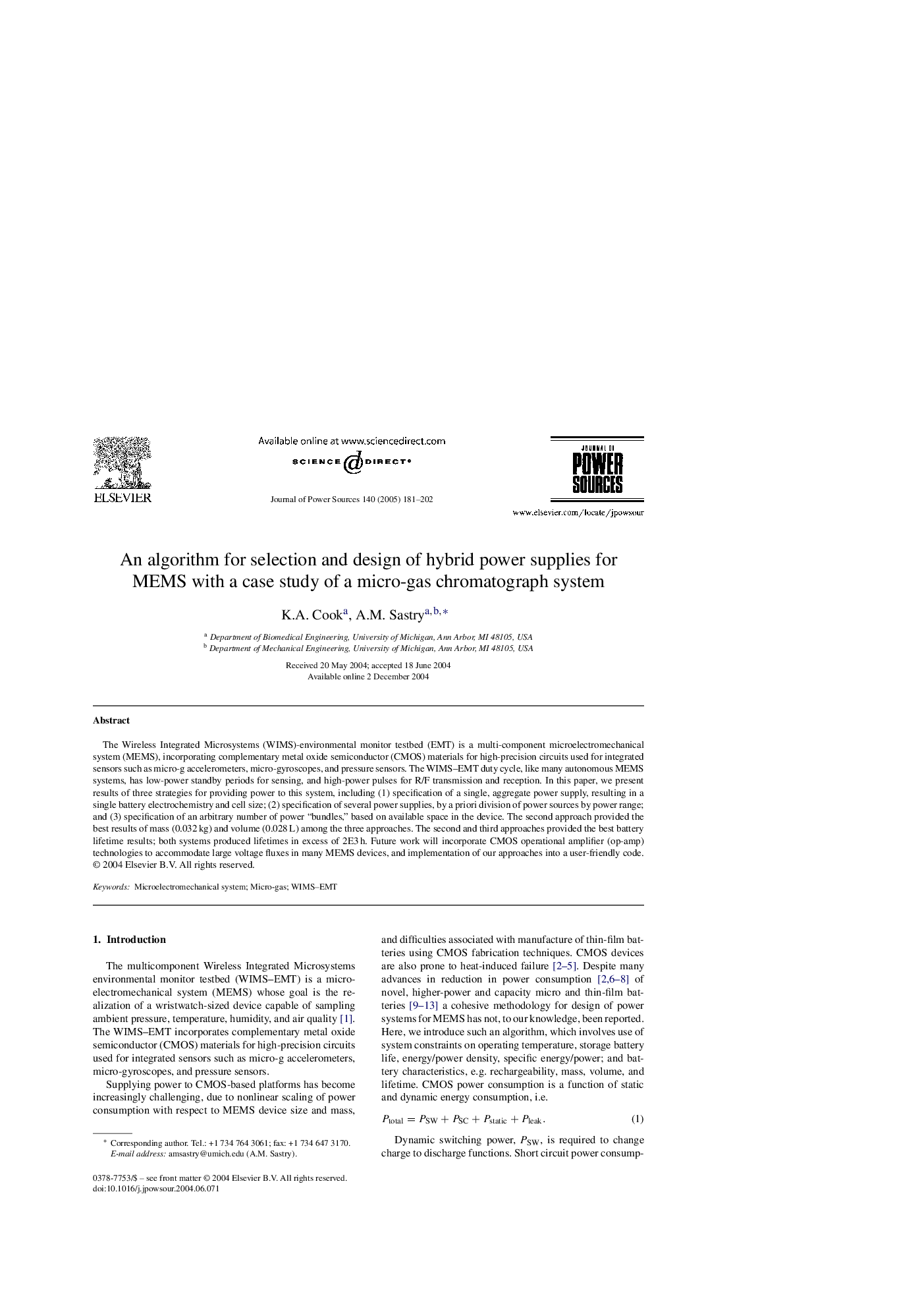| Article ID | Journal | Published Year | Pages | File Type |
|---|---|---|---|---|
| 10568456 | Journal of Power Sources | 2005 | 22 Pages |
Abstract
The Wireless Integrated Microsystems (WIMS)-environmental monitor testbed (EMT) is a multi-component microelectromechanical system (MEMS), incorporating complementary metal oxide semiconductor (CMOS) materials for high-precision circuits used for integrated sensors such as micro-g accelerometers, micro-gyroscopes, and pressure sensors. The WIMS-EMT duty cycle, like many autonomous MEMS systems, has low-power standby periods for sensing, and high-power pulses for R/F transmission and reception. In this paper, we present results of three strategies for providing power to this system, including (1) specification of a single, aggregate power supply, resulting in a single battery electrochemistry and cell size; (2) specification of several power supplies, by a priori division of power sources by power range; and (3) specification of an arbitrary number of power “bundles,” based on available space in the device. The second approach provided the best results of mass (0.032Â kg) and volume (0.028Â L) among the three approaches. The second and third approaches provided the best battery lifetime results; both systems produced lifetimes in excess of 2E3Â h. Future work will incorporate CMOS operational amplifier (op-amp) technologies to accommodate large voltage fluxes in many MEMS devices, and implementation of our approaches into a user-friendly code.
Keywords
Related Topics
Physical Sciences and Engineering
Chemistry
Electrochemistry
Authors
K.A. Cook, A.M. Sastry,
